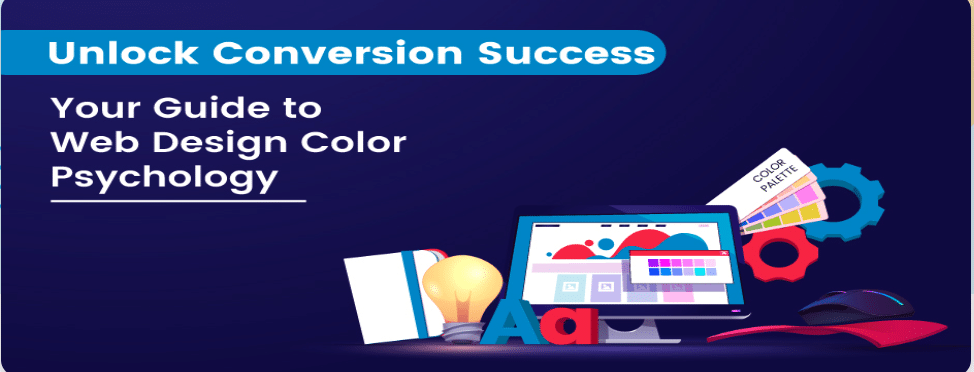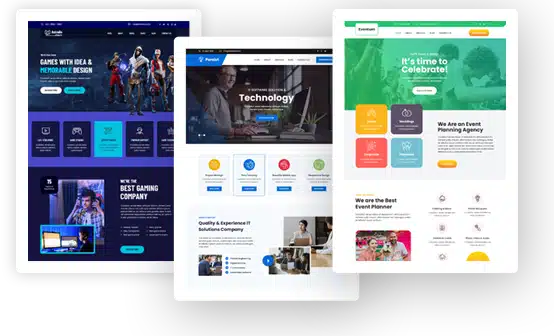How Color Psychology Boosts Web Conversions?

To pick the right colors, you first need to figure out your brand’s character and values. Colors must show what your company stands for. A tech company wanting to look fresh and forward-thinking might choose bold, bright shades. In contrast, businesses rooted in tradition might go for softer, timeless tones. Studies have found that 62 to 90 percent of shoppers judge products by their colors alone. This highlights the importance of color psychology in branding design, as colors influence how people perceive your brand. Identifying your main brand traits—whether you want to feel relatable, strong, intelligent, or motivating—can guide your color choices. While understanding industry trends is important, standing out is key; checking competitors’ color palettes can help decide whether to blend in or make a statement.
Examples of Brands That Got Color Right
Take Slack’s bright, multi-colored logo as an example. It stands out well against its deep purple background, making it easy to notice on both mobile screens and web browsers. FedEx uses orange and purple in an unexpected mix that helps people remember its brand. Mailchimp picked yellow and black, which pop out and fit a tech company aiming to grab attention while staying true to its identity. During its rebranding process, MasterCard kept its well-known red and orange circles to hold on to the warm tones that people associate with it. Dunkin went for an orange-pink combo that energizes customers, matching their products’ nature.
Color Consistency Across All Platforms
Effective color use helps strengthen branding. The University of Nebraska showed how sticking to their specific red (PMS 186) on various print platforms boosted their brand. Around 75% of their printing work needed accurate color matching. Clear brand guidelines should list the exact color codes like HEX, RGB, and Pantone. This ensures colors look the same everywhere, from websites to social media. Such consistency increases trust and professionalism while creating a smooth brand experience wherever people see your brand.
How to Improve Call-to-Actions with Color Psychology
Call-to-action buttons play a big role in getting users to take action in your conversion funnel. The colors you pick for these buttons can have a huge impact on how often people click. Small color changes can change how users behave and may even affect your earnings. To use color in CTAs, you need more than just a general idea of which colors look good.
How to Create Visual Impact with Isolation and Order?
The Von Restorff Effect, also called the isolation effect, shows that things that look different from their surroundings stick better in people’s minds. This concept helps explain why unique CTAs get noticed and perform better than ones that blend into the overall design of a site. Visual hierarchy plays a key role in where users focus their attention first on a page. When it comes to CTAs, color plays a huge role in grabbing attention. Bright and bold colors pull the eye toward important parts of a page. Using the 60-30-10 rule can keep the design balanced. You use 60% for your main color, 30% for a secondary color, and leave 10% to highlight accents. This last part is great for making primary CTAs stand out.
Testing Button Colors With A/B Methods
Instead of arguing over which colors work better, A/B testing shows what appeals to your audience. People often believe there is one “perfect color,” but no such universal rule works on every website. In a well-known case study, HubSpot found that their red button performed 21% better than a green one, even though designers thought green would win. Still, companies like Spotify and Evernote see great results using green for CTAs, showing that the context matters way more than just the color.
Use Contrast and Placement to Increase Clicks
Contrast, not the actual color you pick, decides how effective a button is. Two types of contrast matter the most: the difference between the button and its background, and the contrast between the text and the button’s color. How bright or dark the colors appear compared to each other plays a big role here. NASA says it’s the most critical factor when choosing colors. Even if a button is huge, it won’t work well if it lacks proper contrast.
Color psychology shapes web design in powerful ways far beyond just making things look nice. Colors stir up emotions in an instant and have a strong effect on how people act or make choices. Picking colors instead of can raise your conversion rates and help people recognize your brand more. Context always beats any so-called “best color.” Red can make something feel urgent, blue can help build trust, and green can feel like growth. But how well these work depends on who your audience is and what your brand stands for. Contrast and visual layout are key, too. Even the best color choice won’t help if users can’t spot or click on your call-to-action buttons.
Strategic color choices need both knowledge and real-world testing. By learning the basics of color psychology, you can run A/B tests to see what clicks with your specific audience. Decisions based on data will always beat designs that rely on gut feelings or general tips.
The true strength of color psychology comes from how you use it. Picking colors that match your brand values, making key elements stand out, and keeping things consistent across platforms can turn everyday design decisions into tools that boost conversions. These small but smart color strategies can give you an edge in grabbing attention and inspiring action in today’s crowded digital space.

